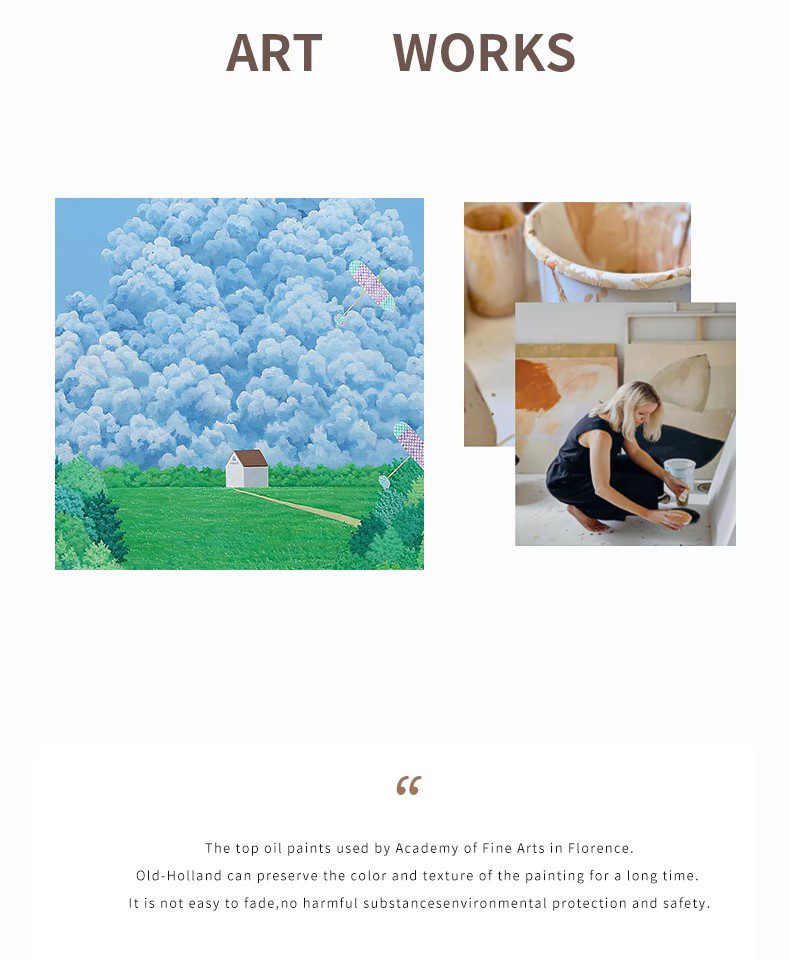Solving the Problem of Rapid Drying in Hand-Painted Oil Paints
Oil painting is celebrated for its slow drying time, allowing artists to blend colors and refine details over hours or even days. However, when paint dries too quickly, it can disrupt workflow, create uneven textures, and limit creative flexibility. This issue often arises from environmental factors, material choices, or technique adjustments. Below are practical strategies to manage and mitigate rapid drying without compromising artistic quality.
Adjusting the Painting Environment
The surrounding conditions significantly influence how oil paint dries. High temperatures, low humidity, and direct sunlight accelerate evaporation, causing paint to become tacky or unworkable faster than desired. To counteract this, artists can modify their workspace.
Controlling room temperature is a primary solution. Ideally, maintain a cool environment (around 65–75°F or 18–24°C) to slow down oxidation, the chemical process responsible for drying. Using fans or open windows to circulate air can inadvertently speed up drying, so opt for gentle ventilation or focus on reducing heat sources like radiators or bright lamps.
Humidity levels also play a critical role. In dry climates, placing bowls of water near the workspace or using a humidifier adds moisture to the air, slowing evaporation. Conversely, in overly humid conditions, a dehumidifier may help maintain balance. Monitoring these factors ensures a stable environment that supports extended working time.
Modifying Paint Consistency and Mediums
The choice of mediums and additives directly affects drying speed. Oil paints dry through oxidation, and certain substances can either inhibit or accelerate this process. By selecting appropriate materials, artists can tailor the paint’s behavior to their needs.
Adding a slow-drying oil, such as poppy seed or safflower oil, to the pigment mix extends working time. These oils dry more gradually than linseed oil, which is commonly used but dries faster. Be mindful of proportions, as excessive use may affect the paint’s texture or adhesion over time.
Retarders or drying delay agents are another option. These substances, often derived from natural ingredients, temporarily slow oxidation without altering the paint’s final properties. A few drops mixed into the paint can provide hours of additional blending time, especially useful for detailed work or large-scale projects.
Avoiding fast-drying mediums like alkyds or siccatives is equally important. While these additives speed up drying for specific techniques, they can be counterproductive when extended working time is needed. Reading labels and understanding the properties of each medium ensures informed decisions.
Techniques to Extend Working Time
Beyond environmental and material adjustments, strategic painting techniques can help manage rapid drying. Adopting methods that minimize exposure to air or distribute paint efficiently reduces the risk of premature hardening.
Working in layers with thin applications allows each stage to dry partially before adding more paint. This approach prevents the underlayer from absorbing oils from subsequent layers, which can cause cracking or uneven drying. Using a palette knife to apply thick strokes sparingly also helps, as thicker paint retains moisture longer than thin washes.
Misting the palette lightly with water (for water-soluble oil paints) or using a stay-wet palette can prevent paint from drying on the mixing surface. For traditional oils, covering the palette with plastic wrap or a damp cloth when not in use creates a barrier against air exposure.
Blending wet-into-wet is most effective when both colors are freshly applied. Prioritizing sections of the canvas that require seamless transitions and working systematically ensures that no area dries before blending is complete. If interruptions are unavoidable, protecting unfinished sections with a light spray of fixative or a sheet of parchment paper can buy additional time.
By combining environmental control, material selection, and mindful techniques, artists can overcome the challenges of rapid drying in oil painting. These strategies empower creators to focus on expression and craftsmanship without the frustration of uncooperative paint, ensuring a smoother and more enjoyable artistic process.
